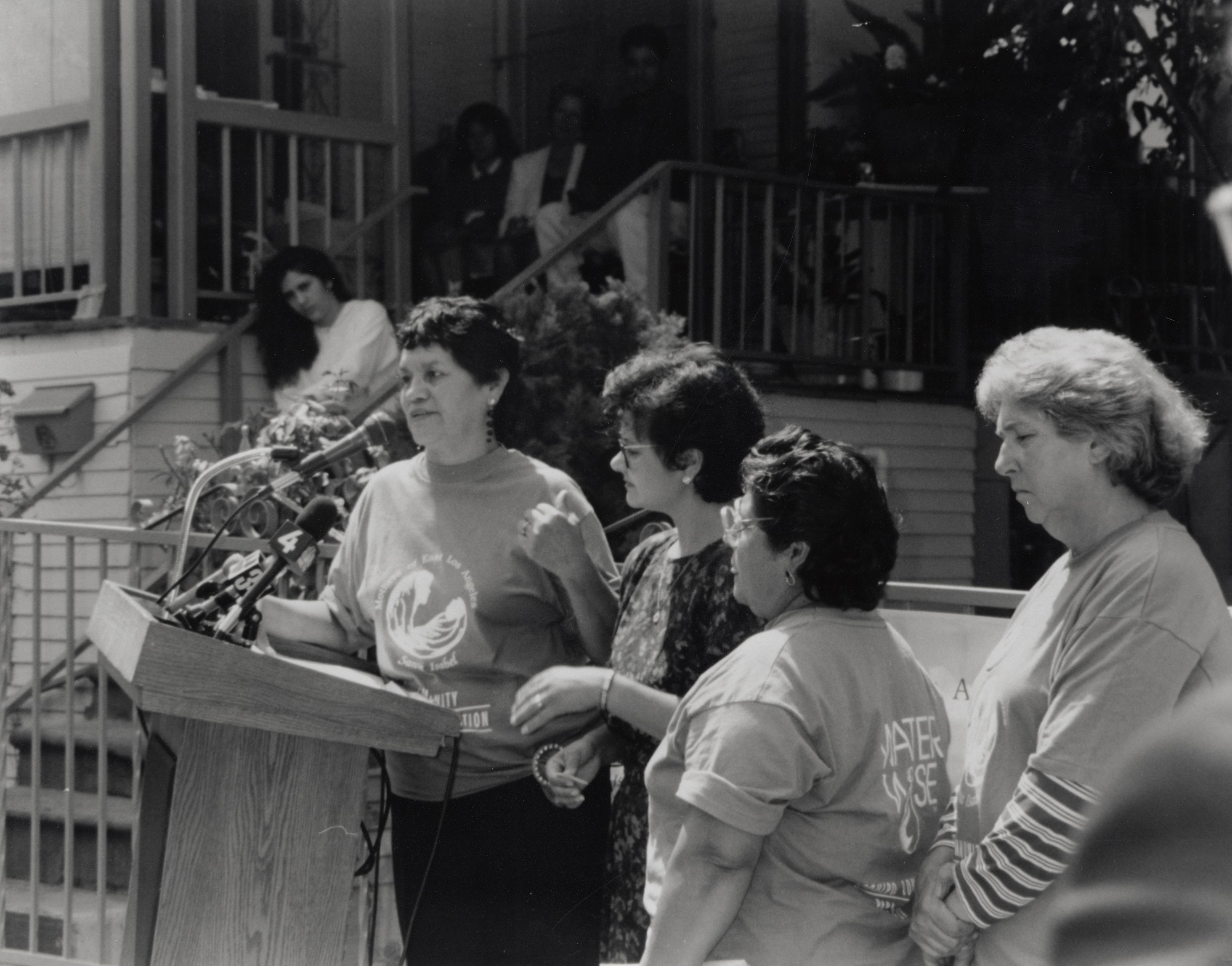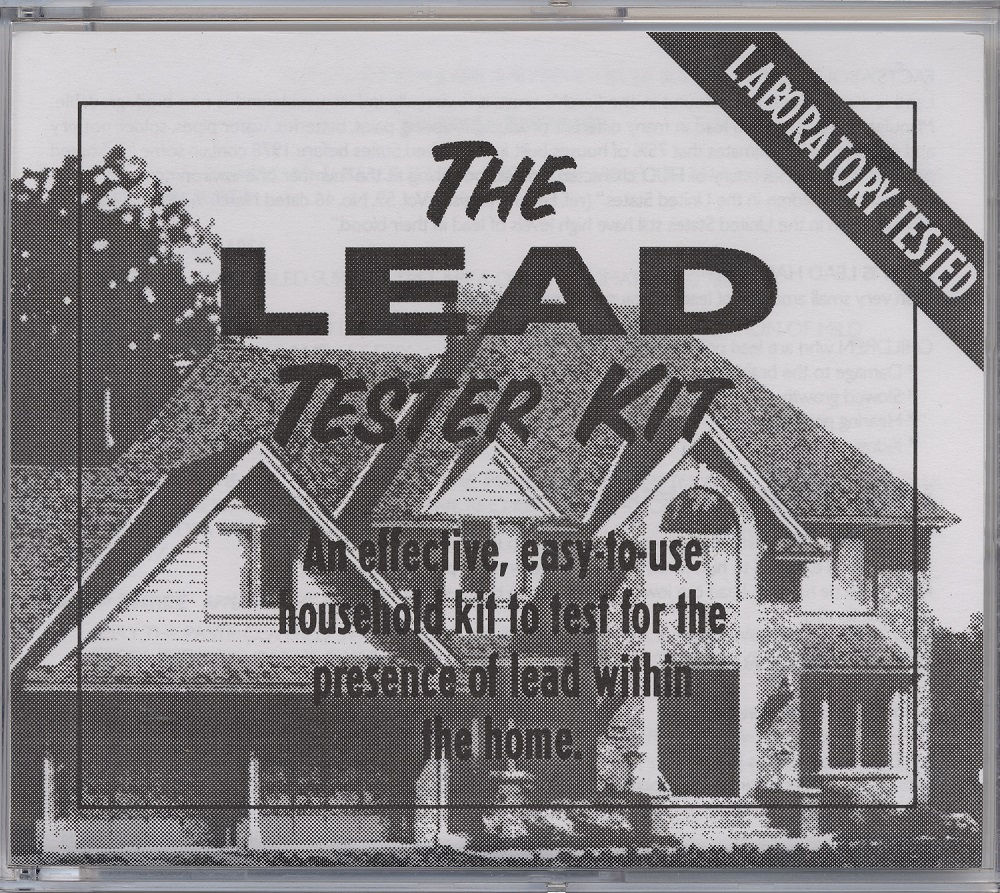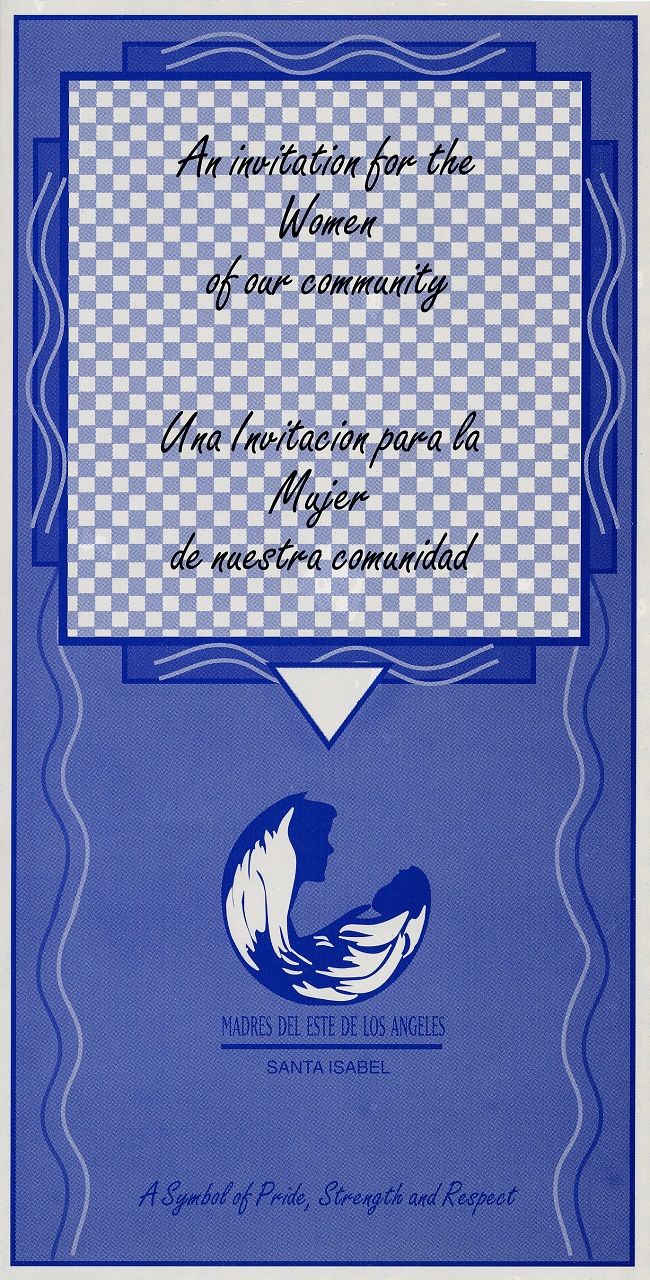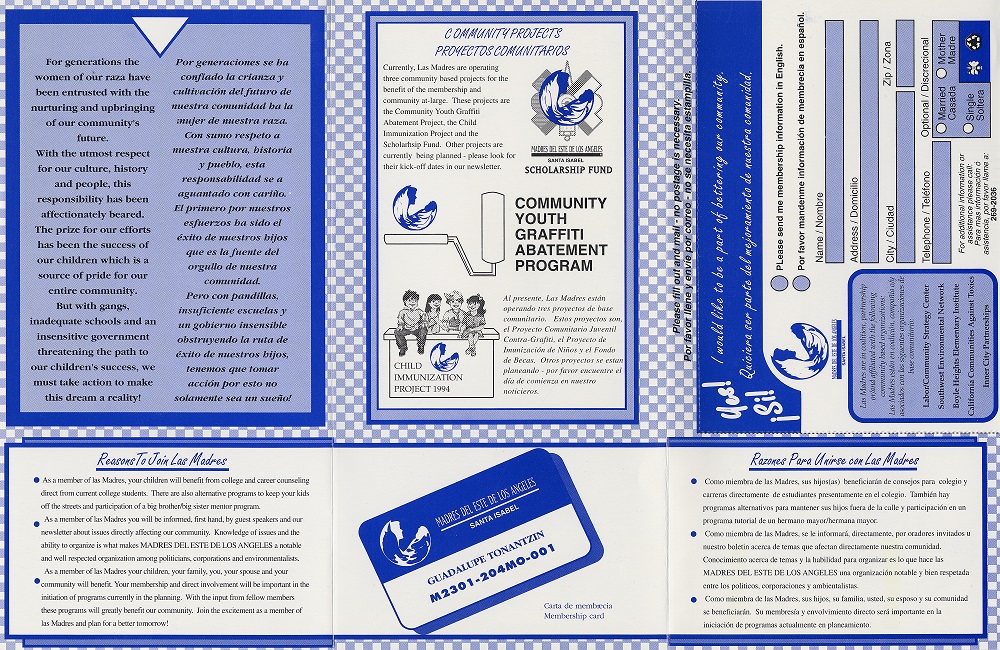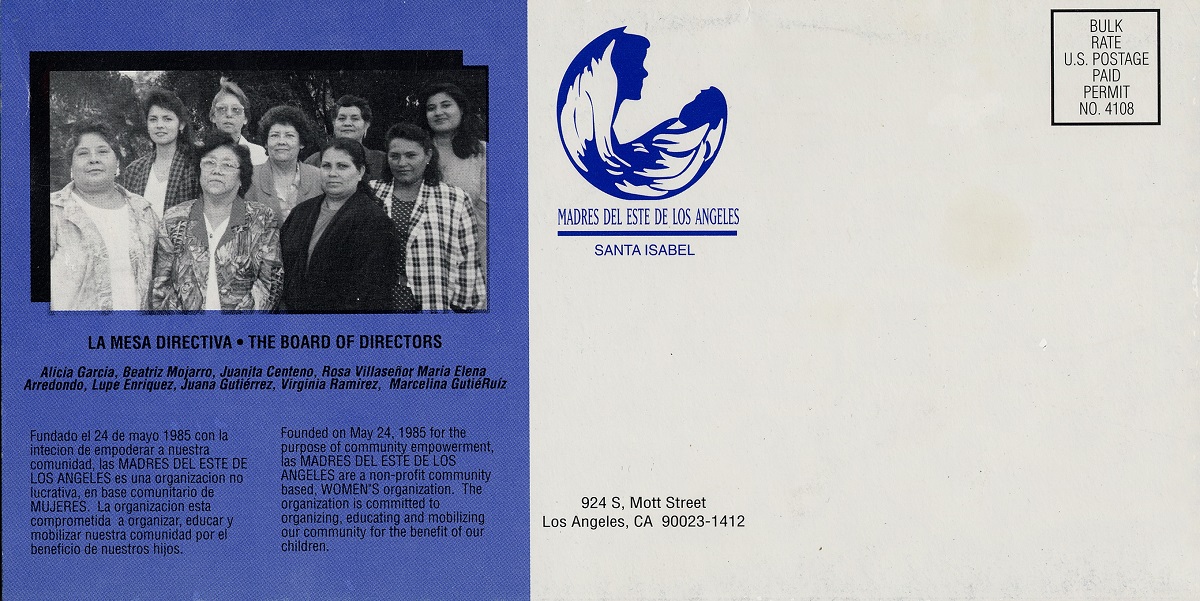Juana Beatríz Gutiérrez and other members of the Mothers of East L.A. at a water conservation press conference
Juana Beatríz Gutiérrez and other members of the Mothers of East L.A. at a water conservation press conference, 1992. California State University Northridge. University Library. Special Collections & Archives. Urban Archives.
Lead Tester Kit
Lead Tester Kit, 1996. California State University Northridge. University Library. Special Collections & Archives. Urban Archives.
An Invitation for the Women of our Community brochure
An Invitation for the Women of our Community brochure. California State University Northridge. University Library. Special Collections & Archives. Urban Archives.
An Invitation for the Women of our Community brochure
“An Invitation for the Women of our Community brochure.” California State University Northridge. University Library. Special Collections & Archives. Urban Archives.
Background
Governor Deukmejian of California proposed the construction of a new prison in East Los Angeles in 1985. The community in East Los Angeles was primarily low income and nonwhite, including many Mexican immigrants. Local residents Aurora Castillo, Juana Beatríz Gutiérrez, and Lucy Ramos were concerned about the dangerous impacts of a prison in their community. The women had seen that residents in wealthier white neighborhoods were able to successfully protest similar plans.
The women formed an activist group and named themselves the Mothers of East Los Angeles (MELA). They choose to identify as mothers, helping to centralize their mission around a better future for the next generation. For months, MELA protested against the plans for a new prison in their community, leading weekly marches and organizing letter-writing campaigns to local politicians. The protests worked, and the state of California canceled the plan.
After their first victory, MELA protested the development of a waste incinerator in Vernon, near Los Angeles. The incinerator would release toxic chemicals into the air, affecting the nearby neighborhoods where residents were primarily Black and Latinx. MELA’s efforts raised public concern over the incinerator’s environmental effects, and the company decided to abandon the plan. The organization continues to advocate for their local communities, focusing on protecting the environment and the health of their neighbors.
About the Document
The photograph shows Juana Beatríz Gutiérrez speaking at a press conference MELA organized about water conservation in 1992. She is joined by other members of the organization.
The lead-test kit was distributed by MELA as part of its Lead Awareness Program. They hired high school students to go door-to-door in East Los Angeles to raise awareness of the dangers of lead paint in old homes.
The membership pamphlet was distributed by MELA around East Los Angeles to increase participation and membership within their local community.
Vocabulary
- environmental justice: The fair treatment of all people with respect to environmental laws and policies.
- waste incinerator: An industrial facility that burns garbage at a high temperature. During this process it releases hazardous waste and pollution.
Discussion Questions
- What strategies did the Mothers of East Los Angeles use to fight for environmental justice in their community?
- How did environmental dangers disproportionately affect Black and Latinx communities in East Los Angeles?
- How did the Mothers of East Los Angeles use their identities as Latina mothers to further their cause? Do you think this was an effective strategy?
Suggested Activities
- Lead a close analysis of the lead-testing kit and the membership pamphlet. What was the goal of producing these items? How did they connect to their goal of involving their community in this work?
- Pair this resource with a speech about the effects of the nuclear disaster at Three Mile Island. What did these activists have in common? How did both groups center their activism around motherhood? How did their strategies differ? Which approach do you think is more effective and why?
- Consider the work of female activists in the environmental movement by teaching this resource alongside Rachel Carson’s speech to the Senate, a speech about the effects of the nuclear disaster at Three Mile Island, and the life story of Yuri Kochiyama.
- For a larger lesson on the experiences of Latinas in this period, combine this resource with the life stories of Maria Connie Villescas and Ellen Ochoa.
Themes
ACTIVISM AND SOCIAL CHANGE; AMERICAN IDENTITY AND CITIZENSHIP


